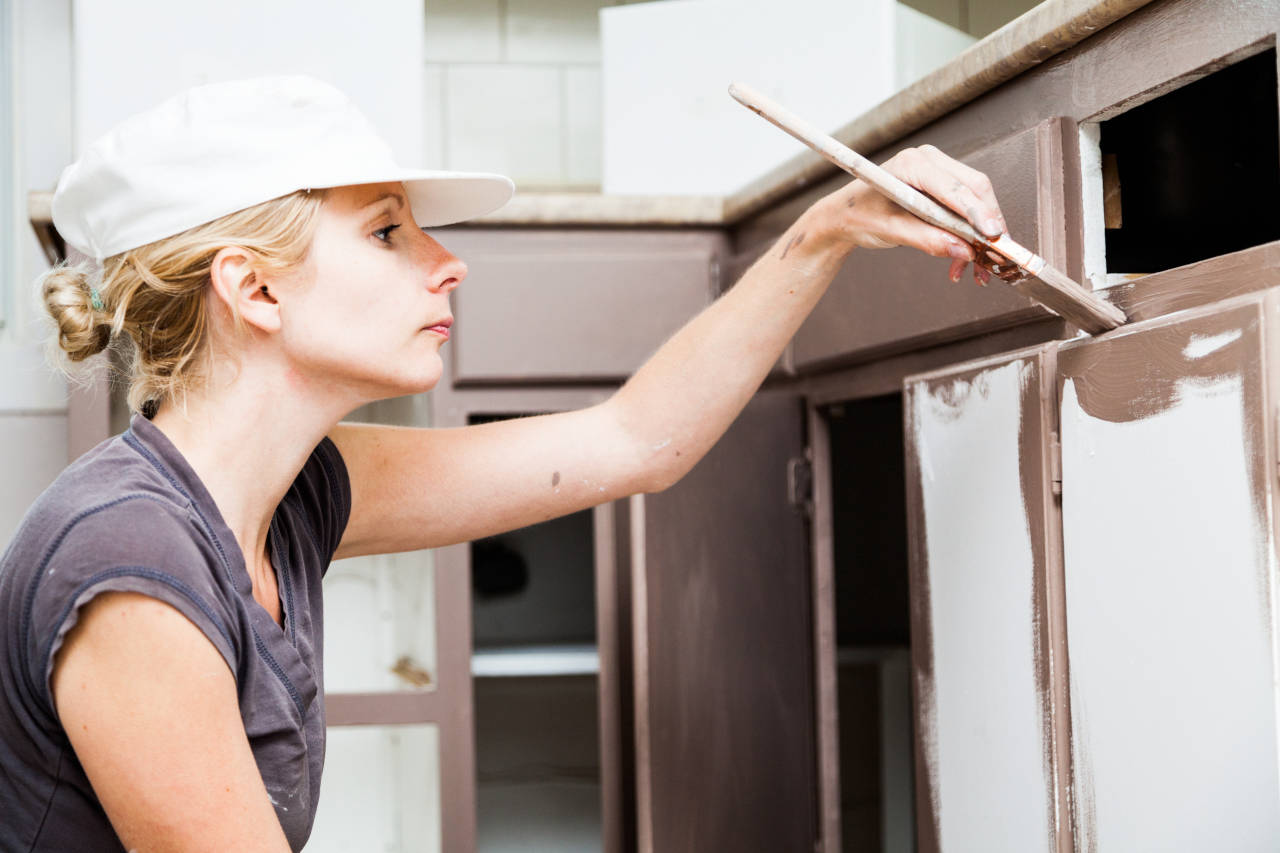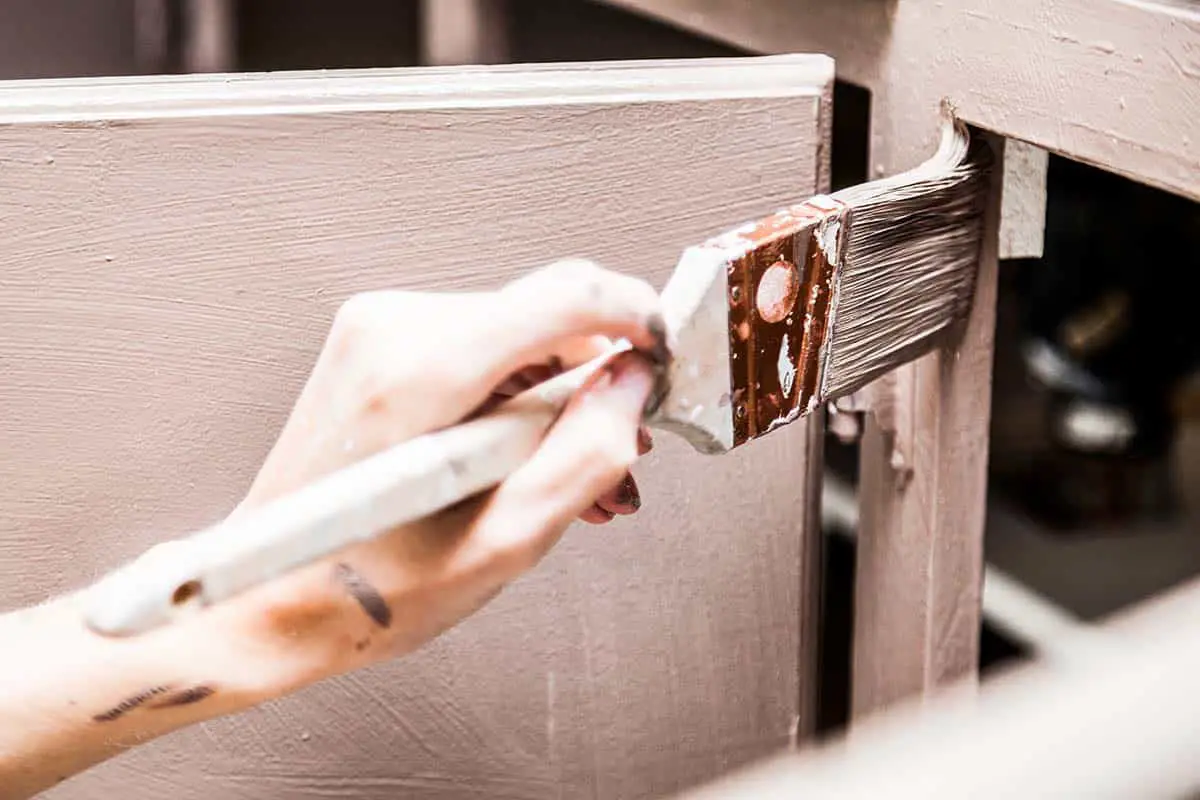Understanding Kitchen Cabinet Paint Needs: Kitchen Cabinet Paint Calculator

Accurately calculating the amount of paint required for your kitchen cabinets is crucial to avoid running out mid-project or ending up with excess paint. Several factors influence the paint quantity needed, including cabinet size, the number of doors and drawer fronts, the type of paint used, and the application method.
Cabinet Size and Number of Doors and Drawer Fronts
The overall size of your cabinets is a primary factor in determining paint requirements. Larger cabinets naturally require more paint than smaller ones. Additionally, the number of doors and drawer fronts, which need to be painted on both sides, directly impacts the total surface area to be covered. For instance, a kitchen with 10 large cabinets with multiple doors and drawers will consume more paint than a kitchen with 5 smaller cabinets with fewer doors and drawers.
Paint Coverage Rates
Paint coverage rates, typically measured in square feet per gallon, vary depending on the type of paint used. Acrylic latex paints, known for their durability and ease of cleaning, usually cover between 350 and 400 square feet per gallon. Oil-based paints, often favored for their high gloss and resistance to moisture, typically cover around 300 square feet per gallon. Enamel paints, renowned for their hard, durable finish, often have a coverage rate of 350 square feet per gallon. These are general estimates, and actual coverage may vary depending on factors like the color of the paint, the surface being painted, and the application method.
Paint Application Methods
The chosen application method significantly influences paint consumption. Spraying, while efficient for covering large areas, tends to use more paint than brushing or rolling. This is because sprayers atomize the paint, resulting in a fine mist that can be lost to overspray. Brushing and rolling, on the other hand, apply paint more directly, minimizing waste. For instance, spraying a set of kitchen cabinets might use up to 20% more paint compared to brushing or rolling.
It’s always advisable to overestimate your paint needs slightly to ensure you have enough for the entire project.
Kitchen Cabinet Paint Calculator Tools

Calculating the required amount of paint for your kitchen cabinets can be daunting, especially for those unfamiliar with paint coverage and application techniques. Fortunately, several online tools and calculators can simplify this process, providing accurate estimates and saving you time and money.
Comparison of Online Kitchen Cabinet Paint Calculators
Online paint calculators offer a convenient way to estimate paint needs, but they vary in their features and accuracy.
- Features: Some calculators consider factors like cabinet dimensions, paint type, desired number of coats, and even the condition of the existing finish. This comprehensive approach provides more accurate estimates.
- Limitations: While online calculators are helpful, they may not account for complex cabinet designs, intricate carvings, or unique paint application techniques. For these cases, it’s advisable to consult a professional painter for a more precise estimate.
It’s important to note that online paint calculators are just estimates. It’s always wise to purchase a little extra paint to account for potential errors, spills, or unforeseen circumstances.
Design of a Simple Paint Calculator
A basic paint calculator can be designed to provide a quick estimate based on fundamental parameters. This calculator would require the following inputs:
- Cabinet Dimensions: Total surface area of the cabinets to be painted, which can be calculated by measuring the width, height, and depth of each cabinet and summing the results.
- Paint Coverage Rate: This value, typically provided by the paint manufacturer, represents the square footage a single gallon of paint can cover with a single coat.
- Desired Coats: The number of paint coats you plan to apply. Typically, two coats are recommended for a durable and even finish.
The formula for calculating the required amount of paint is:
Total Paint Required (gallons) = (Total Cabinet Surface Area (square feet) * Desired Coats) / Paint Coverage Rate (square feet per gallon)
Using a Paint Calculator for a Kitchen Cabinet Project
Let’s illustrate how to use a paint calculator with a hypothetical example. Imagine you have 100 square feet of kitchen cabinets to paint. The chosen paint has a coverage rate of 350 square feet per gallon, and you want to apply two coats.
Applying the formula:
Total Paint Required (gallons) = (100 square feet * 2 coats) / 350 square feet per gallon = 0.57 gallons
This indicates you would need approximately 0.57 gallons of paint for this project. Since paint is typically sold in gallon increments, it’s advisable to purchase one gallon to ensure sufficient coverage.
Factors Affecting Paint Quantity Beyond Calculations

While paint calculators provide a starting point, several factors beyond simple surface area can influence the actual amount of paint required for your kitchen cabinets. Understanding these factors ensures you have enough paint for a successful project, minimizing the need for additional trips to the store.
Existing Paint Layers
The condition of your existing paint layers plays a significant role in determining paint consumption. If your cabinets have multiple layers of old paint, removing these layers before applying fresh paint is crucial. This process, known as stripping, can be achieved using chemical strippers or sanding, and it will increase the overall paint required. However, if the existing paint is in good condition and adheres well, you can typically apply a single coat of primer and two coats of paint, minimizing the total paint needed.
Wood Type
The type of wood used in your cabinets can also impact paint consumption. Porous woods, such as pine or oak, tend to absorb more paint than denser woods like maple or cherry. This means you might need more paint to achieve a smooth and even finish on porous woods.
Primer’s Role, Kitchen cabinet paint calculator
Primer is a crucial step in the painting process, acting as a barrier between the wood and the topcoat paint. It helps the paint adhere better, prevents stains from bleeding through, and provides a smooth, even surface for the final coat. While primer adds an extra layer to your cabinets, it can also contribute to reducing overall paint consumption. Primer typically requires less paint than the topcoat, and a single coat of primer is usually sufficient.
Tips for Minimizing Paint Waste
- Accurate Measurements: Before heading to the store, carefully measure the total surface area of your cabinets. This ensures you purchase the correct amount of paint and avoid overbuying.
- Test Colors: Always test paint colors on a small, inconspicuous area of your cabinet before committing to the entire project. This helps you visualize the final color and avoid costly mistakes if you change your mind.
- Proper Preparation: Thoroughly prepare your cabinets by sanding, cleaning, and filling any holes or imperfections. This ensures a smooth surface and prevents paint from pooling in cracks or crevices, reducing waste.
- Thin Coats: Apply thin, even coats of paint instead of thick, gloppy ones. This allows the paint to dry faster and reduces the risk of drips and runs, minimizing waste.
- Clean Brushes and Rollers: Clean your brushes and rollers thoroughly after each use. This prevents paint from hardening and becoming unusable, extending the life of your tools and reducing waste.
- Store Leftovers Properly: If you have leftover paint, store it in airtight containers in a cool, dry place. This helps prevent the paint from drying out and allows you to use it for touch-ups or future projects.
While a kitchen cabinet paint calculator helps us quantify the necessary paint for a functional space, the design of a girl’s bedroom with bunk beds often requires a different kind of calculation. The girls bedroom with bunk beds design must consider the balance of functionality, aesthetics, and perhaps even a touch of whimsy, all within a limited space.
Ultimately, both the kitchen cabinet paint calculator and the design of a girl’s bedroom with bunk beds require a thoughtful approach to ensure a successful outcome.
The kitchen cabinet paint calculator, a tool often overlooked, can be a valuable asset in achieving a cohesive and aesthetically pleasing kitchen space. Much like considering the optimal lighting for a bedroom, which can significantly impact the overall mood and ambiance, choosing the right paint color for your cabinets can drastically change the feel of your kitchen.
Wireless lighting for bedroom can create a calming atmosphere, and similarly, the right cabinet color can bring warmth, sophistication, or a sense of modernity to your kitchen. A well-executed paint job, aided by the precise calculations of a paint calculator, can truly transform your kitchen into a space that reflects your personal style and enhances your daily experience.
